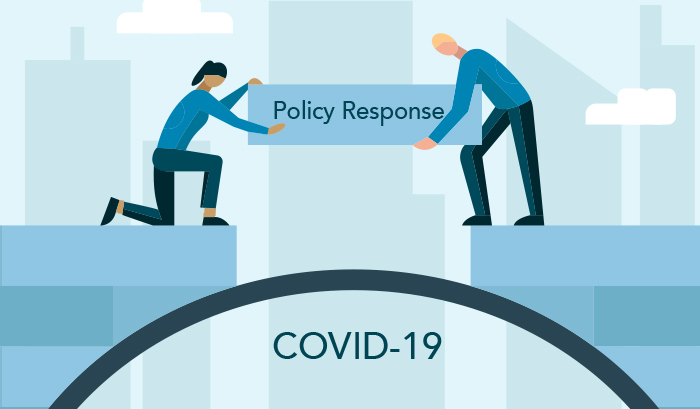Policy Response to Bridge the Gap
• 3 min read

Get the latest in Research & Insights
Sign up to receive a weekly email summary of new articles posted to AMG Research & Insights.

The U.S. economy started 2020 in a strong position, and the global economy looked like it was ready to improve as well. Unfortunately, the spread of coronavirus (COVID-19) has caused increased uncertainty heading into the next few months. AMG anticipates growth in the first quarter will only be slightly lower than we originally projected, but the second and third quarters are likely to be challenging, particularly for small and medium-sized businesses.
There are already signs that consumer spending could drop precipitously in the next few months. In addition, business confidence appears to be weakening, which will inhibit capital spending. The combination of the two will likely impact economic growth, revenues and profits. We emphasize that we do not see this to be a long-term effect as the COVID-19 outbreak is not expected to persist for a long time.
POLICY RESPONSE SOONER RATHER THAN LATER
At this point, monetary and fiscal policy actions are needed to bridge the gap between the good economy that we began the year with and the economy we want when we exit the slowdown caused by coronavirus. Market confidence hinges on an understanding of these policy measures. It is unlikely we will see volatility calm before market confidence recovers.
Monetary policy cannot shoulder this burden alone. The likelihood is that we will need a combination of monetary policy and fiscal policy measures. We have already seen monetary policy actions from the Federal Reserve, China’s Central Bank, and the Bank of England to name a few. We would not be surprised by further action by these groups.
On the fiscal policy side, we are beginning to see plans implemented in countries outside the U.S. and expect to see the same in the U.S. in the near future. In the last few days, Italy and the UK have enacted substantial fiscal programs to offset the impact of COVID-19 on their economies. These kinds of measures are intended to provide “bridge financing” to help small and medium-sized businesses to maintain enough liquidity to be viable businesses after COVID-19. Consumers, especially hourly workers, need similar kinds of support if they are unable to work for a variety of reasons. To the extent that we see similar fiscal policy responses, this will go a long way to restoring investor, business, and consumer confidence and allowing the U.S. and global economy to weather this current storm.
WHAT SHOULD INVESTORS DO?
Especially in environments like this, portfolio diversification and commitment to long-term strategies are key to mitigating downside risks. This is one of the reasons we recommend that AMG clients keep enough cash and cash flow in their portfolios to cover 12-24 months of needs, so they don’t have to sell equities when the market drops. For now, stick to the strategy you developed before the market volatility started and refrain from making emotional choices. This is not the time to sell equities. In addition, we believe that opportunities will be created for investors during this period of extreme volatility just as we saw after the 2008-09 financial crisis.
This information is for general information use only. It is not tailored to any specific situation, is not intended to be investment, tax, financial, legal, or other advice and should not be relied on as such. AMG’s opinions are subject to change without notice, and this report may not be updated to reflect changes in opinion. Forecasts, estimates, and certain other information contained herein are based on proprietary research and should not be considered investment advice or a recommendation to buy, sell or hold any particular security, strategy, or investment product.
Get the latest in Research & Insights
Sign up to receive a weekly email summary of new articles posted to AMG Research & Insights.


